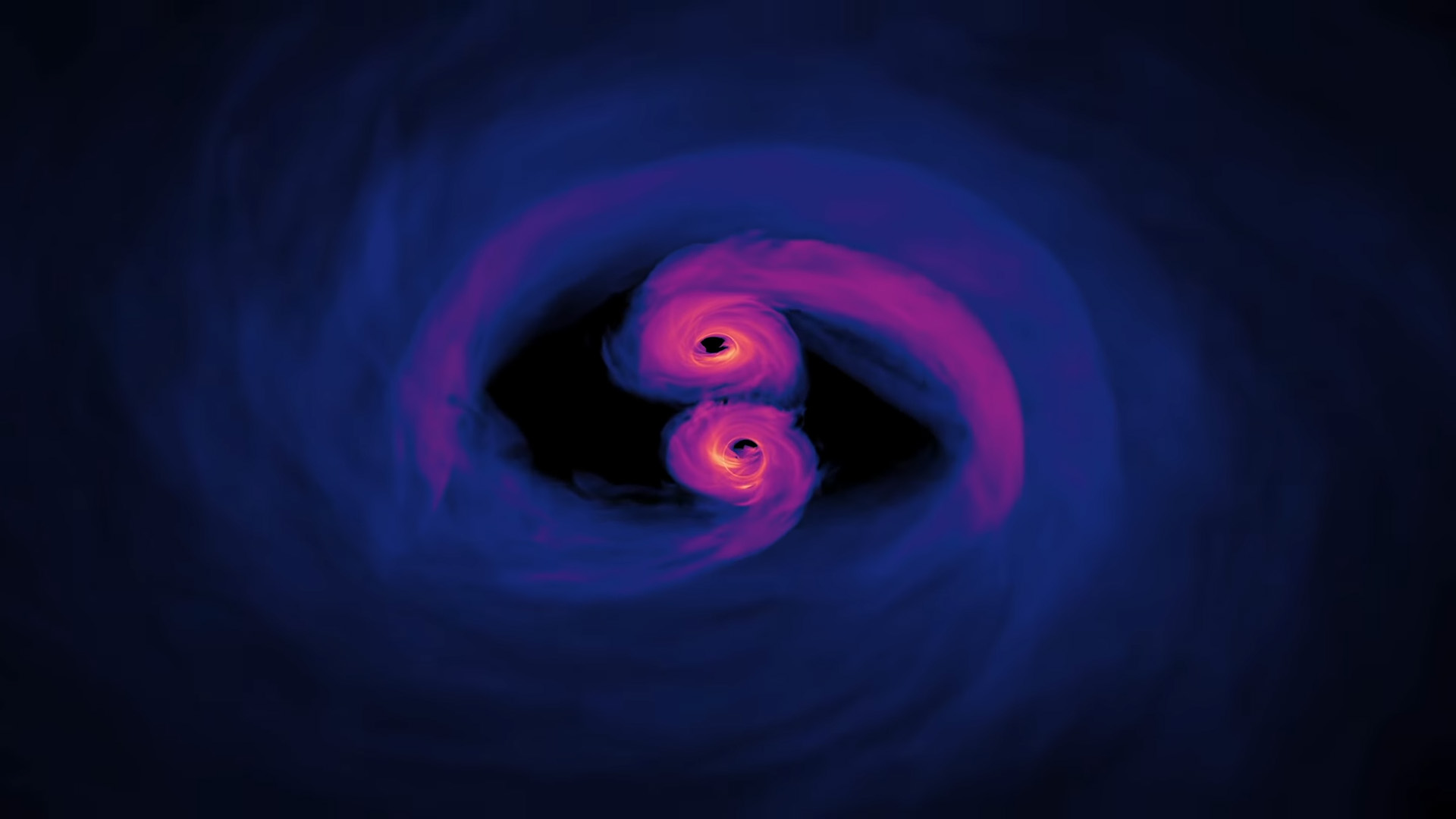Science
Related: About this forumTwo colliding black holes created a phenomenon scientists have never seen before
By Joshua Hawkins

Image: NASA's Goddard Space Flight Center / YouTube
Scientists discovered a phenomenon created by a black hole merger. They believe the merger took place when two black holes collided as they passed by each other, creating something we’ve never seen before. The researchers published a paper on the discovery in the journal Nature Astronomy, and astronomers plan to continue studying the object in the future.
What’s more intriguing about this discovery is that the researchers believe that the black hole merger was instantaneous. They believe this because the shape and brevity of the signal associated with the event make it appear as if there was no spiraling phase – where the black holes were drawn to each other before their collision.
The phenomenon is known as GW190521. To help learn more about it, the researchers created various simulations to try to determine how the black hole merger occurred. These simulations, again, led the researchers to believe that the black holes had passed by each other and merged, almost instantly, into the gravitational event that we’re now witnessing.
Further, the researchers say that it is possible that the event is located in a densely populated region of space, like a star cluster, where gravitational interactions like this are far more likely. The researchers believe that the black holes in the merger sit at around 52 and 81 solar masses. These estimates are slightly lower than previously believed, and it’s likely the models could need more tweaking.
More:
https://bgr.com/science/two-colliding-black-holes-created-a-phenomenon-scientists-have-never-seen-before/
usonian
(13,810 posts)Nature Astronomy would prefer that you not know this, and get you or your institution to pony up dollars to access it.
GW190521: A dynamical capture of two black holes
Rossella Gamba, Matteo Breschi, Gregorio Carullo, Piero Rettegno, Simone Albanesi, Sebastiano Bernuzzi, Alessandro Nagar
We analyze the gravitational-wave signal GW190521 under the hypothesis that it was generated by the merger of two nonspinning black holes on hyperbolic orbits. The best configuration matching the data corresponds to two black holes of source frame masses of 81+62−25M⊙ and 52+32−32M⊙ undergoing two encounters and then merging into an intermediate-mass black hole. Under the hyperbolic merger hypothesis, we find an increase of one unit in the recovered signal-to-noise ratio and a 14 e-fold increase in the maximum likelihood value compared to a quasi-circular merger with precessing spins. We conclude that our results support the first gravitational-wave detection from the dynamical capture of two stellar-mass black holes.